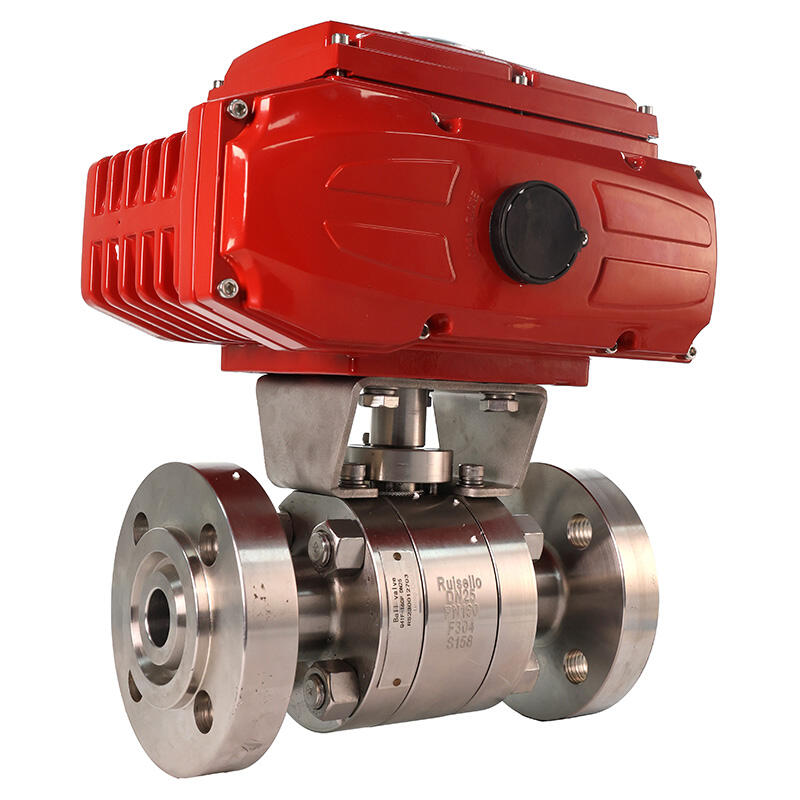High Pressure Ball Valves 10 000 PSI+: Materials, Testing, and Industry Standards
High Pressure Ball Valves are critical components in modern industrial systems that handle extreme pressures often exceeding 10 000 PSI. They are widely used in sectors such as oil and gas exploration, hydraulic systems, aerospace, chemical processing, and power generation. The ability to withstand such high pressures while maintaining reliable sealing and smooth operation requires advanced engineering, specialized materials, rigorous testing procedures, and strict adherence to international standards.
This article provides a comprehensive exploration of High Pressure Ball Valves rated at 10 000 PSI and above, focusing on their design principles, material selection, manufacturing practices, testing methods, compliance requirements, and industry applications. By understanding these aspects, engineers and plant managers can make informed decisions about valve selection, operation, and long-term maintenance.
The Role of High Pressure Ball Valves
Ball valves are quarter-turn valves that use a rotating ball with a bore to control flow. When the bore aligns with the flow path, the valve is open; when turned 90 degrees, the ball blocks the passage and shuts off flow. High Pressure Ball Valves designed for 10 000 PSI or more require robust construction to ensure that the ball, stem, seals, and body remain intact under severe stress.
The primary role of these valves is to provide quick and reliable shutoff in critical systems. They are favored because of their compact design, low torque operation, and ability to provide tight sealing even under high differential pressures. In hydraulic systems, they are often used for isolating pumps, actuators, and test circuits. In oil and gas exploration, they are used in wellhead control panels and subsea equipment, where reliability under pressure is essential.
Materials for Extreme Pressure
Material selection is one of the most important considerations in designing High Pressure Ball Valves. At pressures beyond 10 000 PSI, ordinary materials would deform or crack. Common materials include high-strength stainless steels such as 316, 17-4 PH, and duplex alloys. Carbon steels may be used when corrosion is not a concern, but in aggressive environments, nickel alloys, Inconel, or Hastelloy are often specified.
The body and end connections must resist not only pressure but also stress from cyclic loading. Forged steel is generally preferred over cast steel because it offers superior grain structure and fatigue resistance. The ball itself must be hardened and precisely machined to maintain a perfect seal with the valve seats.
Valve seats and seals are typically made from advanced polymers or composites capable of withstanding both high pressure and wide temperature ranges. PEEK, PTFE, and reinforced thermoplastics are common, though in ultra-high-pressure applications, metallic seats may be used. Stem seals must be designed to prevent leakage even under repeated cycling and high torque loads.
Manufacturing and Design Considerations
The design of High Pressure Ball Valves differs significantly from standard valves. The wall thickness of the body is increased to resist deformation under pressure. Special attention is given to the stem-to-body connection, as stem blowout could be catastrophic at high pressures. Anti-blowout stem designs are therefore standard.
Precision machining ensures that the ball surface and bore are concentric and polished for low operating torque. Trunnion-mounted ball designs are often used in larger valves to distribute the force evenly and reduce operating loads. End connections must also be carefully engineered; threaded, flanged, or compression fittings must be strong enough to maintain integrity under extreme pressures.
Non-destructive testing during manufacturing, including ultrasonic and radiographic inspection, is often employed to ensure that no material flaws exist in the valve body or welded joints. Pressure boundary integrity is critical, and even microscopic defects can lead to catastrophic failure in service.

Testing Requirements
Testing of High Pressure Ball Valves is rigorous and multifaceted. Hydrostatic testing is performed to confirm that the valve can withstand pressure well above its rated design. Typically, valves are tested at 1.5 times the rated pressure to ensure safety margins. For a 10 000 PSI valve, this means testing at 15 000 PSI or more.
Gas testing is also essential, particularly for valves used in natural gas or hydrogen service, where even minor leaks cannot be tolerated. Helium leak testing may be performed because helium molecules are small enough to detect micro-leakage pathways.
Cycle testing evaluates how many open-close operations the valve can perform under full pressure without degradation of seals or increased torque. Fire testing is required for valves in industries where fire exposure is possible, such as offshore platforms or refineries. These tests confirm that the valve can still provide sealing even after exposure to flames and extreme heat.
Low-temperature and high-temperature testing ensures material resilience under diverse conditions. Cryogenic tests may be conducted for valves used in LNG service, while high-temperature exposure is tested for power generation or chemical applications.
Industry Standards and Compliance
High Pressure Ball Valves are governed by several international standards. API (American Petroleum Institute) provides specifications for valves used in oil and gas. API 6D and API 6A outline design, testing, and performance requirements for pipeline and wellhead equipment. ASME standards define pressure ratings and testing requirements. ISO standards also provide global consistency in design and safety.
In addition, NACE MR0175/ISO 15156 specifies materials for use in sour service environments, where hydrogen sulfide may cause stress corrosion cracking. Fire-safe certification such as API 607 or ISO 10497 ensures performance during fire exposure. Pressure Equipment Directive (PED) compliance is required for valves sold in European markets.
Compliance with these standards is not only about meeting legal obligations but also about ensuring safety, reliability, and customer confidence. Documentation of test results, material certifications, and inspection reports is mandatory during audits and procurement processes.
Applications Across Industries
The versatility of High Pressure Ball Valves allows them to be used across multiple industries. In oil and gas exploration, they control flow in drilling rigs, wellheads, and subsea manifolds. In hydraulic power systems, they isolate circuits in test benches, aerospace ground equipment, and industrial presses.
Chemical plants use them in high-pressure reactors and feed systems, where both chemical resistance and mechanical strength are required. Power plants employ them in steam and water circuits where pressures reach extreme levels. In defense and aerospace, they are used in systems such as missile launch equipment, jet fuel systems, and submarine hydraulics.
Each application imposes unique requirements. Offshore platforms demand corrosion resistance to seawater and high chloride environments. Aerospace applications require lightweight yet strong materials. Chemical industries need resistance to acids and solvents. Manufacturers must tailor valve design and materials to meet the exacting needs of each field.
FAQ
Why are High Pressure Ball Valves necessary for 10 000 PSI service?
They provide reliable shutoff and flow control in systems where pressure is too high for conventional valves. Without them, equipment could fail catastrophically, endangering personnel and causing environmental damage.
What materials are most commonly used in High Pressure Ball Valves?
High-strength stainless steels such as 316 and 17-4 PH, duplex alloys, Inconel, and Hastelloy are common choices. Forged steel is preferred for the body, while advanced polymers like PEEK or metallic seats are used for sealing.
How are these valves tested for reliability?
They undergo hydrostatic testing at 1.5 times rated pressure, gas leak testing, cycle endurance testing, fire-safe testing, and temperature resilience tests to ensure performance under all expected conditions.
What standards regulate High Pressure Ball Valves?
API 6D, API 6A, ASME codes, ISO standards, NACE MR0175 for sour service, and fire-safe certifications like API 607 are among the key standards. Compliance ensures safety, reliability, and legal approval for use.
How do High Pressure Ball Valves differ from standard ball valves?
They have thicker bodies, anti-blowout stems, stronger end connections, precision-machined balls, and advanced sealing systems to withstand extreme pressures without deformation or leakage.
In which industries are these valves most widely applied?
Oil and gas exploration, petrochemicals, aerospace, defense, hydraulic power systems, and power generation are the main industries where they are indispensable.
Can High Pressure Ball Valves be repaired, or must they be replaced?
Many can be repaired by replacing seals, seats, or stems, provided the body remains intact and undamaged. However, because of the extreme pressures involved, repairs must follow strict manufacturer guidelines and testing afterward is mandatory.
What are the long-term maintenance requirements?
Regular inspection for wear, seal degradation, and torque changes is essential. Valves in critical service should be periodically pressure-tested even after installation to ensure reliability. Lubrication of moving parts may also be required depending on design.
Why is documentation so important for these valves?
Because they operate in critical applications, full documentation of design, materials, and testing is required for compliance audits, insurance approval, and regulatory inspections. It also provides traceability for future maintenance and replacement.
What factors should guide valve selection in extreme pressure applications?
Key factors include material compatibility with process fluids, ability to handle temperature extremes, compliance with industry standards, maintenance accessibility, and proven test results under similar operating conditions.
Table of Contents
- High Pressure Ball Valves 10 000 PSI+: Materials, Testing, and Industry Standards
- The Role of High Pressure Ball Valves
- Materials for Extreme Pressure
- Manufacturing and Design Considerations
- Testing Requirements
- Industry Standards and Compliance
- Applications Across Industries
-
FAQ
- Why are High Pressure Ball Valves necessary for 10 000 PSI service?
- What materials are most commonly used in High Pressure Ball Valves?
- How are these valves tested for reliability?
- What standards regulate High Pressure Ball Valves?
- How do High Pressure Ball Valves differ from standard ball valves?
- In which industries are these valves most widely applied?
- Can High Pressure Ball Valves be repaired, or must they be replaced?
- What are the long-term maintenance requirements?
- Why is documentation so important for these valves?
- What factors should guide valve selection in extreme pressure applications?


